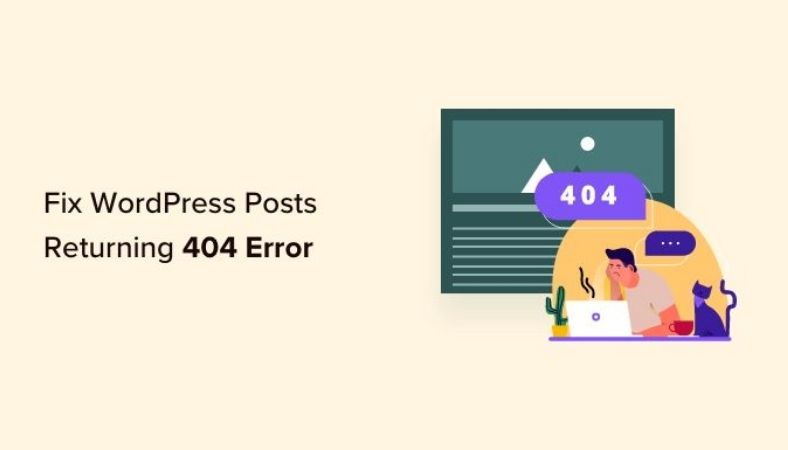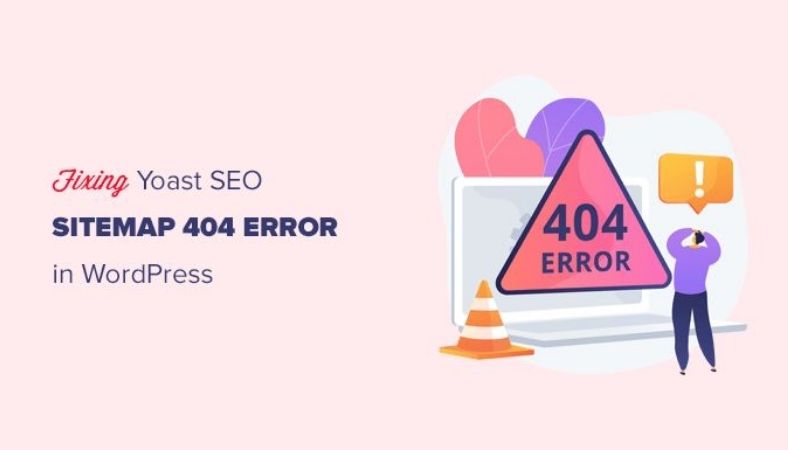Fixing 404 Errors?
In the modern world of digital presence, the problems of websites can significantly influence the visiting process, traffic as well as search engine optimization. Among the most famous and irritating mistakes made by guests of the site is Fix 404 errors when a web page is not found.
This is the mistake that normally presents itself in the form of a 404 Page Not Found message and may occur because of either broken links or deleted pages, or when writing an incorrect URL. The 404 issues are not only a nuisance, but they might make your site lose potential customers, the credibility of your site and the impact of it on your SEO efforts.
This article will take you through the step of fixing the 404 errors, the types of 404 errors, and how one can effectively deal with them. After covering all this you will be in a position to better your website by making it user friendly and ranking high on Google. Google prioritises sites with mobile versions over those that do not, which is the mobile-first indexing policy.
What on Earth is a Fix 404 errors and Why It Happens?
It is a 404 mistake that appears when the user tries to arrive at a page on the site that is not available or once available. What is usually displayed on this page is the page that says, 404 Page Not Found.
It is likely to occur because of a few reasons:
- Deleted Pages: In the event that a page is removed or renamed without a proper redirect to some other page, it will cause a 404 error when the page is accessed.
- Broken Links: A 404 error can be produced by a link that is targeting a page that does not exist anymore or is relocated.
- Wrong URL: There are times that the user can make a mistake by typing URL wrongly and the user is redirected to a non-existent page.
Frustration can have an adverse impact on user experience:
- Visitors that become distressed at being on your site could leave, leading to higher bounce rates and further decreasing user satisfaction.
- Users may become distrustful of the site over time.
Impact on SEO Rankings:
- Error pages can wreak havoc on your search engine rankings by sending negative signals to search engines.
- Search engines often scan and index broken pages, using up their crawl budget.

How to Locate 404 Errors on Your Website
To successfully address 404 errors on your site, it’s essential that you first identify where they’re occurring and take the appropriate measures. Here’s a guide on how to spot broken links:
- Google Search Console’s Crawl Errors Report offers a detailed listing of crawl errors, such as 404s. Additionally, this report highlights pages with broken links.
- Use Google’s URL Inspection Tool to see if specific URLs have been indexed by Google.
- Tools for Recognizing 404 Errors: Screaming Frog SEO Spider is a desktop tool that crawls your website in order to detect broken links and identify them.
- Ahrefs: An innovative tool designed to conduct SEO audits and identify any 404 error pages.
- Broken Link Checker: A free tool that quickly identifies dead links across your site.
- How to Check Manually: Went through all your website’s internal and external outbound links manually and make note of them all.
Utilise your browser’s developer tools to monitor network responses for any 404 errors when loading pages.
Best Practices for Resolving 404 Errors
Once you’ve identified the 404 errors, the next step should be fixing them. Depending on their cause, approaches for fixing them vary; here is a breakdown of common scenarios and their solutions:
Redirect Broken URLs Utilize 301 Redirects
If you’ve relocated or renamed one of your pages, use a 301 redirect to guide both users and search engines to the new location, thus maintaining SEO value.
Redirect Chain Issues: Check that there is no chain of redirects that could lead to additional 404s.
Create a Custom 404 Page
- Assist Users Navigating: By customizing a 404 page to help visitors find working pages quickly and efficiently on your site, custom 404 pages can aid users in their navigational needs. These can include links to popular content or a search bar.
- Branding: To maintain consistency across your site, ensure the 404 page matches its look and feel.
Restoring Missing Pages
Upload Content: If an errantly deleted page was uploaded in error, restore its content or redirect to an alternative page by uploading or redirecting.
Fix External Links
- Reach Out to Webmasters: If external websites link to nonexistent pages on your site, reach out and request they update their links accordingly.
- Disavow Toxic Links: For spammy or harmful links that lead to 404 pages, the Google Disavow tool can help remove them.
Tools to Autocorrect 404 Errors
There are various tools and plugins that can automate the process of identifying and correcting 404 errors on websites, here are a few of them:
Redirection Plugin (WordPress)
- Allows you to easily manage 301 redirects and track 404 errors on your WordPress website.
- Redirect users automatically to the most pertinent pages if a page is missing.
Ahrefs’ Site
Audit Tool Provides a thorough audit of your website and quickly pinpoints any 404 errors so they can be quickly fixed.
Yoast SEO Plugin
This popular WordPress SEO plugin includes features to set redirects and manage error pages effectively.
How to Use Google Search Console to Address 404 Errors
Google Search Console is an invaluable tool for monitoring and solving 404 issues quickly and efficiently. Here’s how it works:
- Step-by-Step Guide: Succinct Overview of Google Search Console Logging In
- Navigating to Crawl Errors: Under “Coverage,” you will see information regarding any 404 errors.
- Fix or Redirect: For each error encountered, decide whether it requires redirecting or restoration.
- Benefits: For real-time insights into which pages are giving 404 errors.
- Link Status: Determine whether broken links are internal or external.
The Importance of Monitoring for 404 Errors
Addressing 404 errors requires ongoing surveillance to keep websites healthy and functional. Here are key practices for doing just that.
- Set Up Alerts: Use tools such as Ahrefs, Google Search Console and Broken Link Checker to set automated alerts whenever new 404 errors arise.
- Keep an Eye Out For Updates: When making updates or adding content, regularly check for broken links and set up redirects as required.
- Perform Regular Audits: Conduct periodic audits to detect any unnoticed mistakes.
Long-Term Benefits:
- Maintaining an organized link structure will improve both user experience and SEO rankings in the long term.
- Prevents an increase of 404 errors over time.
Understanding How 404 Errors Affect SEO and Mitigating the Damage
Search engines such as Google take 404 errors very seriously, as any too many broken links found by Googlebot will lower its crawl budget and consequently your rankings. To minimize 404 Error Damage: An Effective Plan To Mitigate It
When Googlebot finds too many broken links it could reduce your crawl budget resulting in lower rankings for your website.
SEO Impact of 404 Errors:
- Reduced Crawl Budget: Search engines may waste valuable resources crawling broken links, leaving less resources for important pages.
- Indexing Issues: Google may fail to index pages properly if they’re regularly being redirected or return an HTTP 404 status code.
Solutions for SEO:
- Redirect or Replace Broken Pages: Correct missing or redirect broken pages to maintain authority.
- Avoid Link Loops: Ensure no pages are redirecting indefinitely as this may skew search engines’ perception of what pages should rank highly in search results.
How to Repair eCommerce Website 404 Errors
Error 404 errors on eCommerce websites can be especially detrimental, leading to lost sales and dissatisfied customers. Here’s how you can address them:
Common Issues in eCommerce:
- Deleted Products: Products may be deleted without providing an alternate path for redirection.
- Out-Of-Stock Items: An out-of-stock item without a suitable replacement can lead to a 404 error page.
- Solutions: B Create automatic redirects for discontinued products to comparable ones.
- Custom 404 Page: Guide users directly to similar products or category pages.
How to Address 404 Errors on Mobile Devices
The contemporary websites must be mobile-optimized. Addressing 404 errors in mobile may contribute to improving user experience and decreasing the bounce rates.
Key Tips:
- Friendly 404 Page: Make your 404 page responsive and easily scrollable.
- Repair Mobile URLs: In cases, a site can have different URLs on mobile devices. You should also periodically crawl mobile pages and look in the 404 list.
Case Study: Fixing 404 Error and Organic Traffic
Increased To understand the problem of 404 error and how it can be solved, take a look at a real-life case of the problem and its solution with the improvement of the traffic and engagement.
- Company X: 30 per cent Traffic increase Within the blog of company X, there were more than 100 broken links.
- Remedy: The team found and repaired code errors 404, redirected old pages and internal linking was enhanced.
- Outcome: Organic traffic grew by 30 percent, and the bounce rates decreased after 6 months.
FAQs about Fix 404 errors
what are 404 errors and why should I fix them?
The 404 errors have shown that a page is not available. It is preferable to fix them as it damages both user experience and SEO ranking.
What are some of the ways through which a 404 error can be resolved fast?
Optimize them by using redirects, recovery of missing pages, the implementation of an individual 404 page using beneficial links.
Are 404 mistakes capable of influencing search engine rank?
The answer is yes, your rankings on search engines could be reduced in cases where they find too many broken links in your websites.
Where can I locate 404 errors in my site?
Explore 404 errors with the help of such tools as Google Search Console or Screaming Frog SEO Spider.
Do I have to resolve all the 404s on my site?
Not all the errors might require correcting but substantial ones, particularly when it comes to more popular pages, can be repaired to attract a good user experience.
Conclusion
The problem is that 404 errors may ruin the user experience and SEO in your site heavily. Nevertheless, during the right tool usage, the implementation of redirects and the periodic monitoring of the audit, you can check the health of your site and its convenience. Eliminating these mistakes is not only a case of avoiding dead links, but more of making your web site to be good performing and being credible to the user and the search engines.
Through the steps which are described in this guide, you would be able to develop a more relaxed browsing environment and with online visibility on Google. With the knowledge on how to deal with the 404 errors you now have, now it is time to take a step towards correcting links on your site. Start today auditing your site. Optimize your site and you watch your traffic and ranking shoot up.

